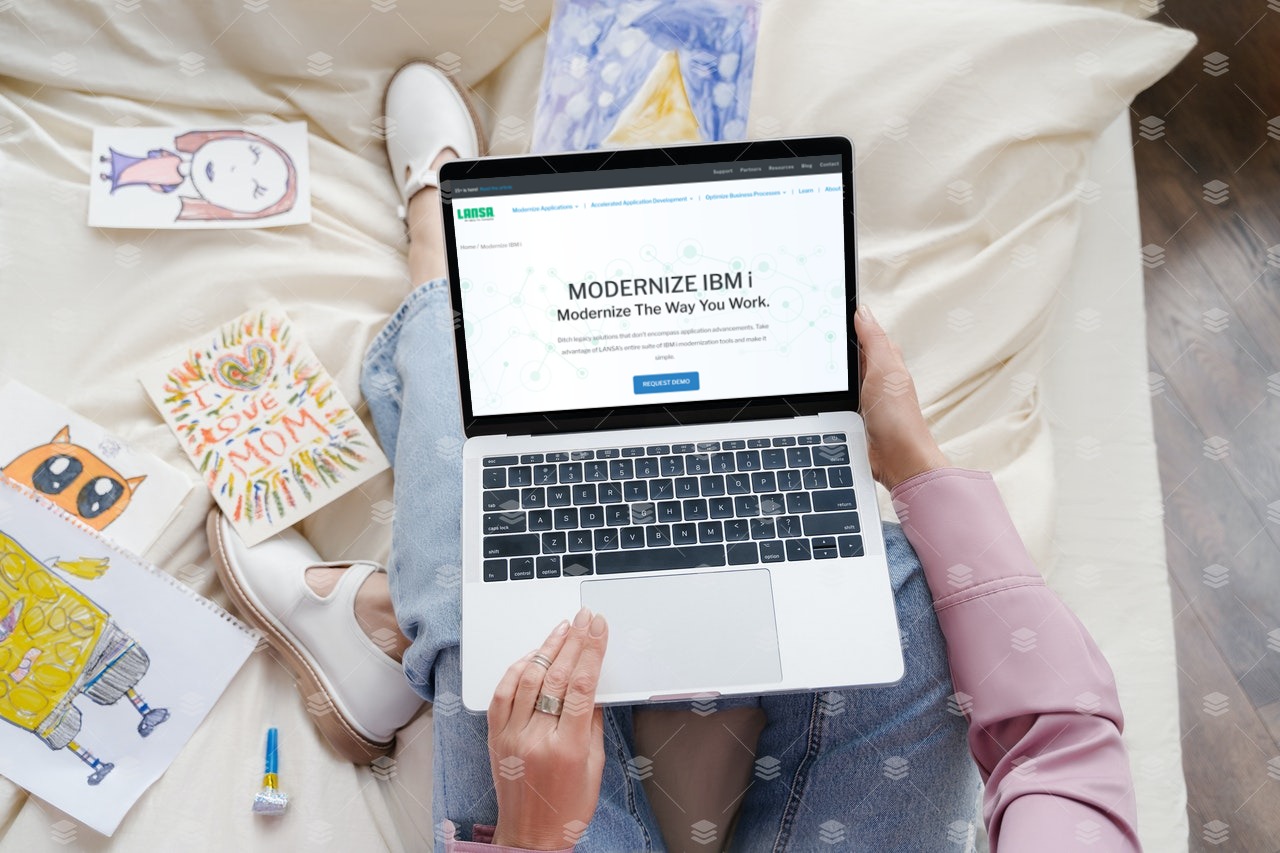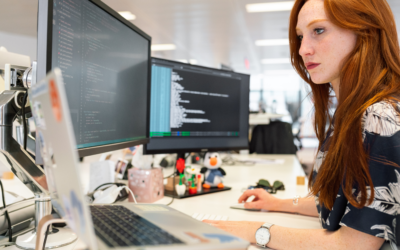The most obvious example of how IBM i applications have evolved over the past 40 years is the user interface. Earlier IBM i screens were one color, green on a black background (thus we know the term “green screen”), while later models only supported a few colors. Now, businesses can make use of different IBM i modernization tools to modernize the legacy IBM i green screens. Modern IBM i applications offer a powerful graphical user interface that may be used with a point-and-touch interface, displaying images and videos with sound.
Modernization can be a difficult process that can make or break a company. For modernizing legacy applications, there are several IBM I modernization tools available. Furthermore, powerful IBM i modernization tools allow applications to retain their tested backend business functions while modernizing the frontend interface.
In this article, we will go through the different IBM i green screen modernization techniques. We will also explore how to transform legacy IBM i green screens into a web-enabled GUI.
Why would you move from a green screen to a graphical user interface?
Your green screen may be missing out on almost 40 years of UI/UX technology improvements, in part because it is required to run on a mechanism that was developed in the 1970s (nowadays there may even be 5250 emulators available). No matter how efficient your business applications are, if they still use a green screen, they might be regarded as a “legacy” by today’s standards. Older IBM i green screens can’t handle the complex images, audio, and video that a web browser offers (or terminals).
For both business and consumer IBM i applications, a graphical user interface is the most common user experience. The widespread use of mobile devices with touch screens and the internet drive this experience. Green screens are unable to display data like graphs and visuals that provide clarity from both the visual element and the numbers behind the graphics.
What are the benefits of IBM i green screen modernization?
We currently live in a digital world where legacy green screens are replaced with modern graphical user interfaces that are not only demanded by businesses but also the standard as a result of improvements in UI/UX technology. Now, businesses are looking for solutions that can rapidly and efficiently transfer their current RPG applications from just the 5250 to web and mobile devices. A few advantages of moving to a modern IBM i application’s graphical user interface are:
- Maximize the benefits of the IBM i platform for the 21st-century workforce.
- IBM i applications that are simple to use and learn may increase the productivity and efficiency of end users.
- IBM i green screen modernization reduces the perception of outdated applications.
- Maintain the advantages of your own-brand products in the marketplace.
- Boost application adoption to cut down application costs and training time.
Which techniques are used to transform Legacy Screen to GUI?
There are many methods are available to modernize the green screen of IBM i applications. Some techniques change the UI of the IBM i applications while retaining the business and data layers. Other techniques can change the user interface with other layers or parts of them. Here, we listed all techniques that help transform the legacy green screen into GUI.
What techniques are helpful to only change the user interface of IBM i applications while retaining the data and business layers?
Below mentioned techniques can only change the user interface while retaining the business and data layers:
Is Screen Scraping A Valid Solution?
Screen scraping is a modernization technique that improves the presentation of your legacy applications. In brief, it involves converting your IBM I 5250 green screen into modern user interfaces. Using a screen scraping tool, you can link your legacy application to a modern display. This tool captures the original screen content from your legacy application and displays it in a browser.
Screen scraping only gives your application a more visually appealing presentation. The existing application remains the same.
Is adding a New User Interface an option?
Adding a new user interface differently can also update your legacy application. This technique adds a little bit more even though, like screen scraping, it modernizes screen content.
The legacy IBM i applications will make use of scripts that can understand the purpose of the screen presented in addition to interacting with their original content. For example, to get to your order entry screen in your legacy application, you may need to go through additional layers of menus. A script helps to navigate those menus for you behind the scenes and call up the order entry screen, that not only saves your time but also improves usability.
What about exposing Business Functions as Callable Services like a REST API?
Legacy applications carry out business functions that support business operations. Converting the legacy apps into callable services maintains the business operations and makes it accessible to other applications. Callable services are organizational activities. Calculating discounts, accessing and keeping customer information, and obtaining customer orders are a few examples.
Callable services are discrete sets of logic units that other applications can access by using a web service, a remote procedure call, or by exchanging messages.
What techniques are helpful to change the user interface with other layers or parts of IBM i applications?
The following techniques help change the user interface with other layers or some parts of them:
Is migrating the application a good idea?
Migrating the application is a technique where you can move or transform the discrete functional blocks from the legacy application to one or more other modern applications. This technique modernizes operational business processes instead of modernizing the whole legacy application. You can first update the more critical business operations and then move ahead.
Consider a legacy ERP application consisting of several modules, such as the finance module, management, billing, etc. By employing the migration strategy, you can use another application to manage finances instead of multiple modules of the legacy ERP application.
Is rewriting the application a valid option?
Rewriting an application means building your application from scratch using both, software development tools and deployment methods. When you decide to rewrite a legacy IBM i application, it involves a complete software development process to build a new application using modern tools and technologies.
Programming language conversion is a rewrite application technique. It keeps the functionality of legacy applications while modernizing them for use with advanced technologies. Using the modernization tools, you can read the legacy application’s source code and convert it into a different programming language, such as converting COBOL to Java or C#. The theory and philosophy of the languages must be compatible for this technique to be effective.
Would replacing the application be cost effective?
Replacing the legacy IBM i applications is a technique in which businesses retire their legacy applications and purchase new applications.
As we know, the data is a significant component of the legacy application, you need to transfer it to a new application. However, there is a risk exists of disrupting the business operations during the transformation. As new systems generally cost more and take longer to implement than expected. Purchasing a modern application also restricts your technological options because the software provider has already selected the technical implementation.
How does LANSA support this transformation?
LANSA offers a powerful IBM i green screen modernization tool known as aXes. It converts 5250 IBM green screens into web-enabled applications. It enables businesses to easily transform their current IBM i 5250 apps into web pages without modifying the source code. To satisfy your business needs, the LANSA aXes tool employs a variety of legacy modernization strategies, which are then automatically applied to all screens inside an application. Here, you can see the demo of the LANSA aXes tool:
Ready to get started modernizing your green screen apps today?
Are you ready to modernize your IBM i green screens with LANSA? Willing to start turning your green screens into web apps without further delay? Try using aXes and RAMP to see how easy it is. Contact us to get started!






0 Comments